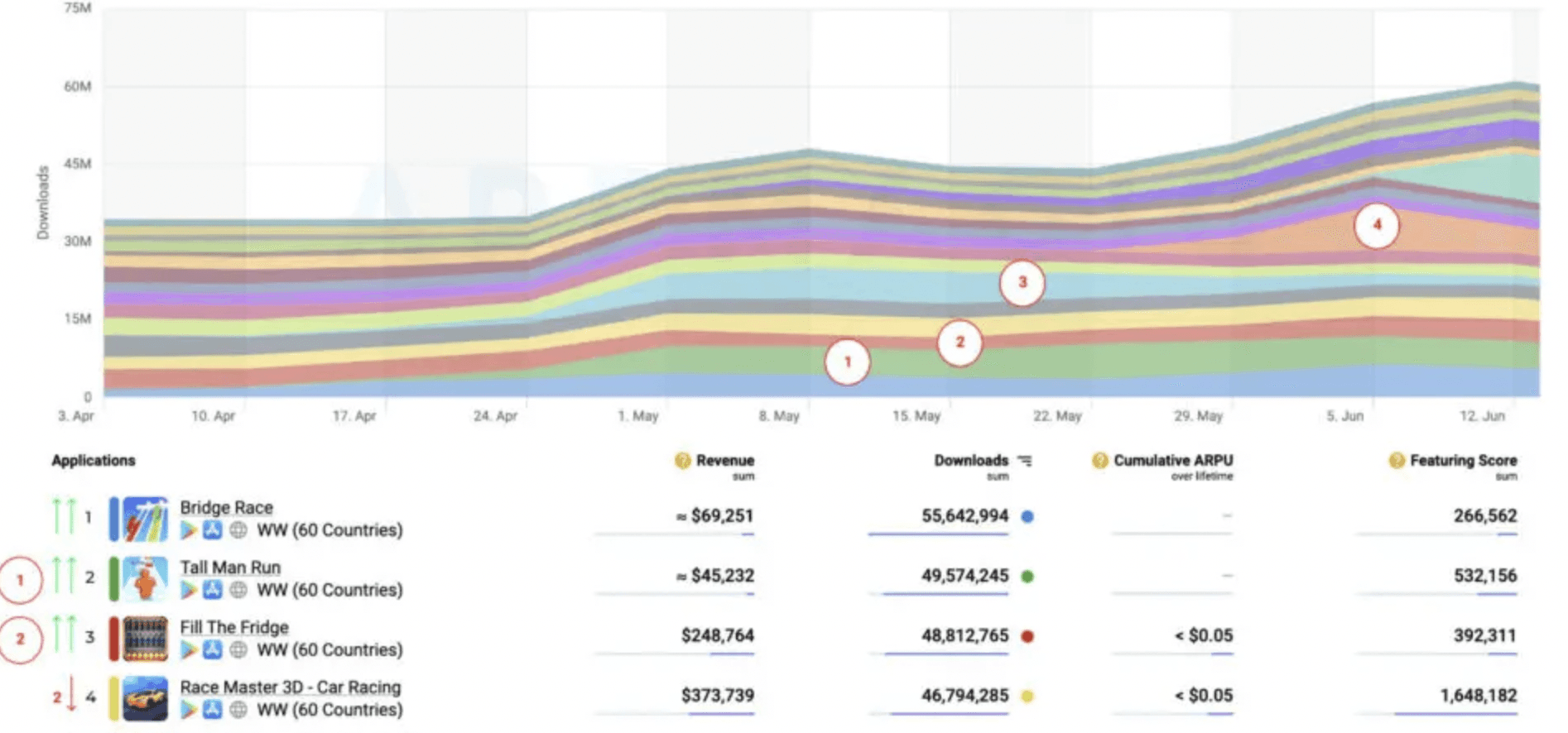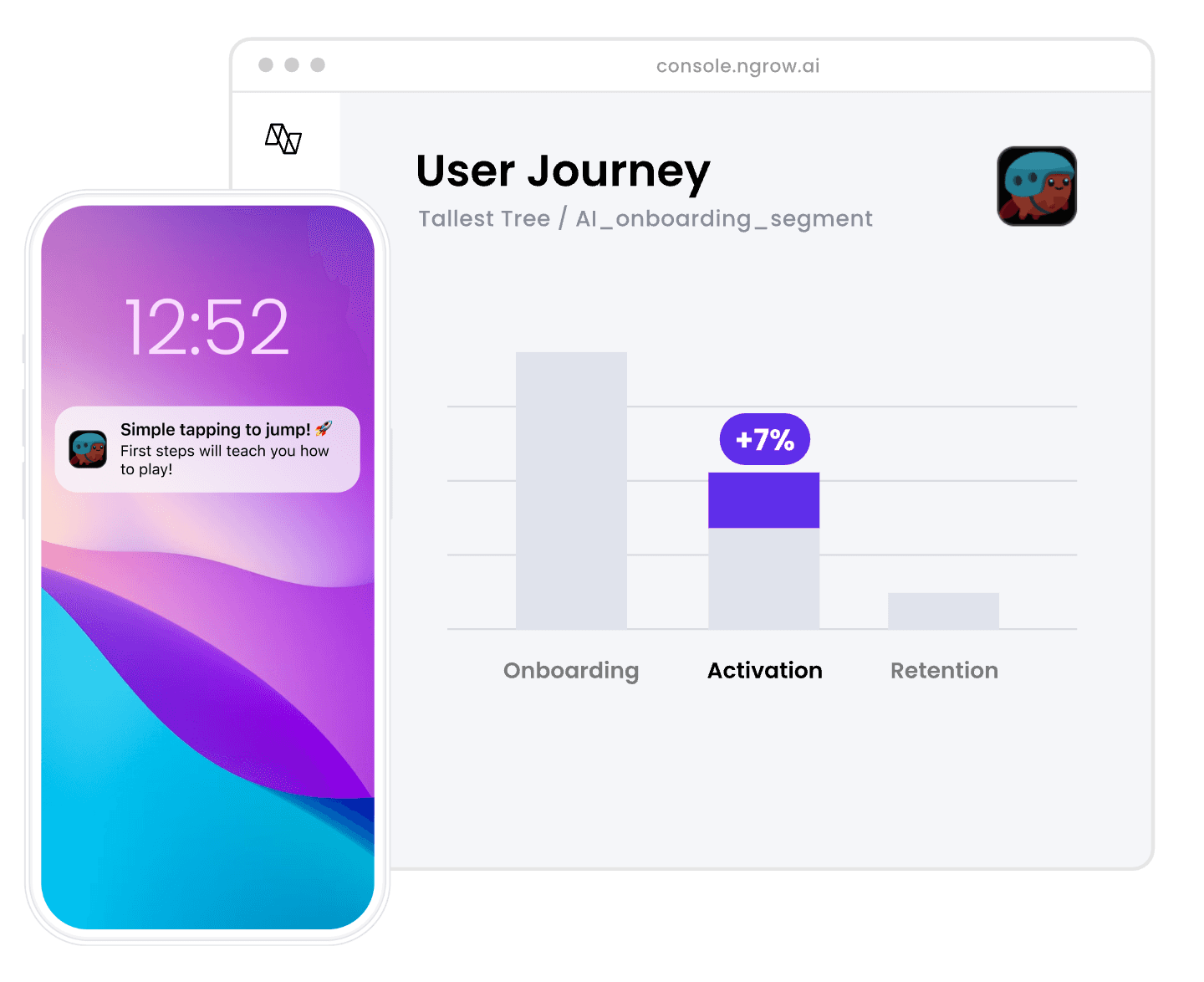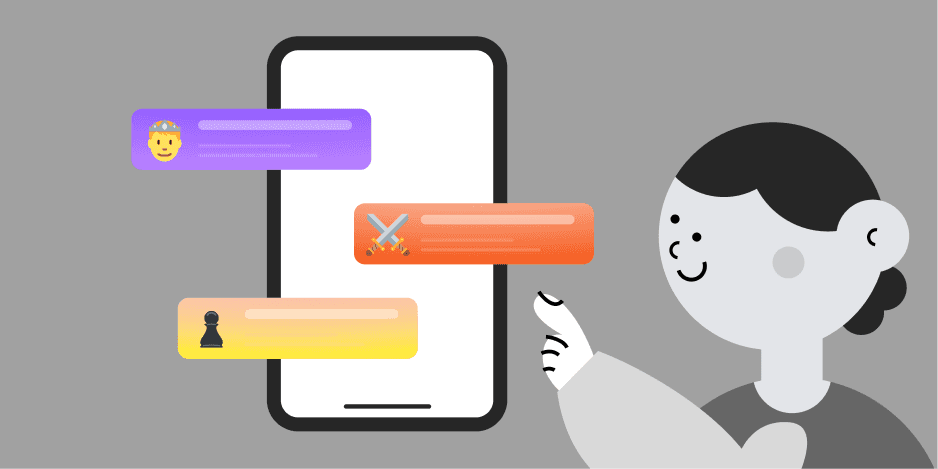4
min to read
Sep 8, 2023
Push notifications have emerged as a powerful tool for companies to not only engage users but also drive revenue by strategically leveraging positive nudges in consumer behavior. Let us explore how push notifications can be harnessed to generate more revenue through the art of positive behavioral nudges. We'll delve into specific strategies that capitalize on user behavior insights to create a win-win scenario for both businesses and customers.
1. Cost of User Acquisition: The Challenge in Gaming
The cost of user acquisition has been steadily rising over the past few years. This increase can be attributed to a highly competitive landscape, where numerous game developers are vying for the attention of a limited pool of potential players. As user acquisition costs soar, it becomes increasingly critical for developers to optimize their strategies to acquire users efficiently. Opt in rates for push notifications depend on the app vertical and platform (it’s historically higher for Android devices) and goes as high as 70% for Android vs 50-60% for iOS, especially steadily increasing over the past few years.
Opt-in rates have been 70% for Android vs 50-60% for iOS
2. Keeping the user engaged, and interested
In light of rising user acquisition costs, retaining and maximizing the value from acquired users is paramount. It's not just about getting users to download the game; it's about keeping them engaged over the long term. This is where push notifications (PNs) come into play. But it doesn’t all end here, apart from the game content & core mechanics, push notifications could be one of the strongest leverages that can help improve user retention and increase ROI of UA campaigns that apps and games that use push notifications have noticed anywhere between 3 to 10 times retention rate increases versus not using any notifications and one major reason is the increase in Single opt-in by almost 600% in the past year.

Read more about the Case Study here
3. Understanding the Power of Push Notifications
Many publishers in the gaming industry have yet to fully grasp the potential of the push notification (PN) channel. PNs are an effective tool for engaging and retaining users, but they require a nuanced approach. Simply bombarding users with notifications can lead to user fatigue and opt-outs. To harness the true power of PNs, game developers need to align them with the core mechanics of the game and deliver timely, relevant, and personalized messages. On the other hand, not using Push notifications is a massive lost opportunity as apps and games lose out on valuable communication channels with their audience.
4. Stats for Opt-Ins on Android and iOS
Understanding the statistics for opt-ins on Android and iOS is crucial. Game developers need to strike a balance between using the PN channel effectively and avoiding overuse that might alienate users. This balance can be achieved by aligning notifications with the core gameplay, such as sending reminders for uncompleted levels, offering rewards, or notifying users of limited-time events. By analyzing opt-in rates, developers can determine user preferences and tailor their PN strategies accordingly.
5. Leveraging Existing Customer Base
Apps, game developers and game publishers often have an existing audience that are very easily reachable, and this becomes a big part of the communication channel that can help become the base for using push notifications. PNs can be highly effective in this context. To make PNs work within this user base, factors like frequency, timing, rewards, and challenges must be carefully configured. For example, sending notifications about daily rewards or special in-game events can encourage regular engagement. Cart abandonment push notifications stand at a 16%, while re-engagement push notifications are at 13%. All the more reason for you to give this a try for your brand, especially if you’re one that is building in the E-com and foodtech space.
How does Ngrow help?
Ngrow, as a platform for push notifications, plays a crucial role in optimizing the ROI of gaming apps. Ngrow allows developers to fine-tune their PN strategies by providing insights into user behavior, preferences, and engagement patterns. By aligning PNs with Ngrow's data-driven recommendations and user insights, developers can improve user retention, increase in-app purchases, and ultimately enhance their ROI.
Since there is no cost or effort required for integration, the No-SDK approach enables game developers to setup and start generating results almost immediately by eliminating heavy upfront integration costs and time. But it’s not just about the volumes, the quality and frequency also matter, which is where most people get this wrong.

1. Firebase and Lack of Personalization:
Many game developers use Firebase for push notifications, but they often fall into the trap of sending too generic notifications particularly with broad messaging and poor segmentation to all users. This coupled with bad timing and generic messaging can be disastrous to say the least. This lack of personalization can result in notifications that don't resonate with individual players. As a result, these notifications may go ignored or even lead to users opting out of receiving them.
2. Overuse of Push Notifications:
Some developers resort to sending an excessive number of PNs in an attempt to engage users. However, bombarding users with notifications can have the opposite effect, leading to user fatigue and frustration. Effective PN strategies prioritize quality over quantity, ensuring that notifications are relevant and timely.
3. In-App Activity-Based PNs:
In-app activity-based PNs are meant to enhance user engagement by sending notifications triggered by specific user actions, such as completing a level. However, if not implemented thoughtfully, they can backfire. For example, sending a notification immediately after a user closes the game may feel intrusive and disrupt the user experience. These notifications should be carefully timed and relevant to the user's progress or interests.
Understanding Positive Nudges
Positive nudges involve subtle prompts or incentives that guide users towards desired behaviors without forcefully pushing them. By aligning these nudges with consumer behavior, companies can create a seamless and personalized experience that encourages users to take actions that ultimately lead to increased revenue.
Personalized Recommendations: Analyze user preferences and browsing history to send tailored push notifications featuring product recommendations. By appealing to individual interests, you can spark curiosity and drive more clicks, potentially leading to purchases.
Flash Sales and Exclusive Offers: Employ scarcity tactics by sending notifications about flash sales or exclusive offers. The sense of urgency created by limited-time deals can trigger impulse purchases and boost immediate revenue.
Loyalty Rewards and Gamification: Recognize and reward loyal customers with push notifications that announce special rewards or loyalty points. Incorporating gamification elements, such as unlocking achievements or levels, can enhance engagement and encourage repeat purchases.
Referral Incentives: Encourage users to refer friends and family through push notifications that promise enticing incentives for successful referrals. This can expand your customer base and drive revenue through new acquisitions.
Upgrades and Cross-Sells: For users who have already made a purchase, send targeted push notifications promoting complementary products or upgraded versions. Highlighting the added value can entice users to explore further, potentially leading to increased spending.
Event-Based Engagement: Celebrate milestones like user anniversaries or birthdays with personalized push notifications accompanied by exclusive offers. This thoughtful gesture fosters a sense of connection and can lead to celebratory purchases.
Abandoned Cart Recovery: Send a timely push notification to remind users about items left in their cart. Utilize persuasive language and possibly offer a limited-time discount to nudge them towards completing the purchase, boosting conversion rates.
Conclusion
Push notifications, when strategically designed as positive nudges, can be a revenue-generating powerhouse for companies. By aligning with consumer behavior and leveraging the art of persuasion, businesses can create a seamless and enjoyable experience that encourages users to take actions beneficial to both parties.




